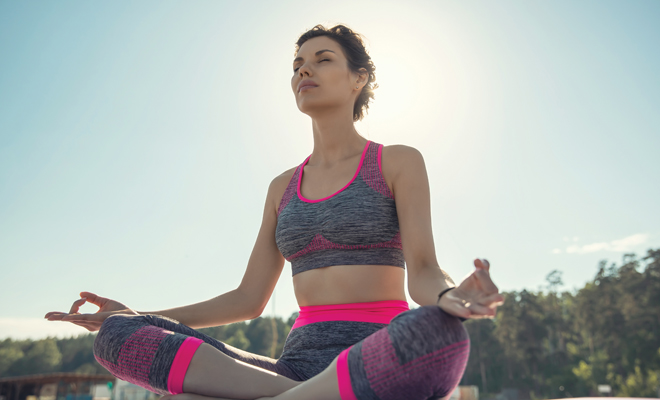
The Healing Hands of Pilates and Yoga
Martha and Suzanne have been friends since the fourth grade. They had the same red Tupperware® lunch box and liked the same thin crust pizza. At one point, they even liked the same guy, but friendship prevailed and the guy went bye-bye. The two thought they couldn’t share much more in their 30-year friendship, but last year, they found out they could. Martha and Suzanne both were diagnosed with breast cancer–different types, but each as serious as the other.
Both women were treated for their respective cancers and remarkably are now in remission. As a part of their ongoing treatment, their doctor recommended they begin a Pilates or yoga program. Now, two times a week, Martha and Suzanne bond over butterfly poses and down dogs and they’re feeling better every day.
It’s no secret that Pilates and yoga offer huge health gains for the body and mind. While the two fitness formats are very different, they are similar in that they are low impact and can be performed without any equipment. As far as health benefits, Pilates and yoga can improve conditioning, strength, flexibility and overall health.
The popularity isn’t just for the general public. These days, thousands of cancer patients are clamoring to get into cancer-geared classes to unwind and de-stress from a very frightening and complicated time in their life. Combined with treatment, Pilates and yoga for cancer are steadily gaining praise in the medical and fitness communities. No matter what type of cancer, specialized and individualized yoga and Pilates programs are being developed by professionals and then followed by patients who are in the midst of or recovering from cancer-related treatments. Most evidence suggests that yoga and Pilates can not only help adult cancer patients and survivors manage symptoms and side effects, but also help them lead longer, fuller lives.
As an example, fatigue, one of the most frequently reported side effects among cancer survivors, has been shown to be reduced with regular yoga practice. In several recent and randomized clinical trials, results have shown that three months of 90-minute biweekly yoga participation can significantly improve persistent fatigue for patients with breast cancer.
In another study, cancer patients were divided into two groups. One group completed a program of Pilates and at-home exercise, while the second group did at-home exercise only. Results indicated the Pilates group had significant improvements in range of motion, pain and fatigue compared to the home-based exercisers.
Pilates and yoga aren’t a cure for cancer, but many experts would agree that their healing properties go well beyond a medical diagnosis. The healing may occur on three different levels—physical, psychological and spiritual. For instance, physically, a patient’s energy may increase while the psychological benefits might include gaining more self-confidence and a connection to others. For spirituality, someone may gain the opportunity to reflect and possibly improve the relationship they have with themselves and their higher power.
But not all classes are the same and neither are the needs of each patient. It is important to look for a customized program that will address the patient’s needs and goals. Teaching yoga to cancer patients and survivors is different than teaching yoga in a typical gym or studio setting. There are often physical limitations for participants and each person’s body and capabilities are unique. Specialized training and supervised experience are important to help teachers identify and work with the lifelong side effects triggered by cancer and its treatments. Thorough programs are based on research and knowledge of fitness as well as cancers and treatments. This helps facilitate a safe and effective practice.
Cancer patients in recovery are often tired and weak. Taking things slowly keeps people from becoming overwhelmed, while hopefully inspiring them to move forward with their program. As a patient becomes stronger and able to use her chest, shoulders, arms and back more fluidly, the independence gained goes a long way toward self-confidence and emotional motivation.
Whether someone is going through cancer or has just completed treatment, Pilates and yoga can change the way they feel. If you or someone you know could benefit from either of these practices, talk to your oncologist, find a program that works for you and begin a different journey in a new direction
Martha and Suzanne remain close friends, but their bond is altered now. Drawn to each other naturally many years ago, they are now connected by the empowerment of reclaiming their bodies and changing the path of their future. ■
The basic physical goals of Pilates and yoga for cancer patients might include the following:
• Improve body mechanics and awareness and restore normal movement patterns
• Ease nausea and decrease fatigue
• Increase core strength and overall body strength
• Improve balance
• Improve flexibility and range of motion
• Increase function of lymphatic system
Sources: yogajournal.com, oncologyrehab.net, y4c.com, ncbi.nlm.nih.gov and share.upmc.com.







